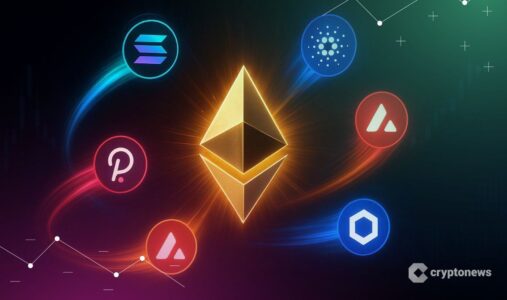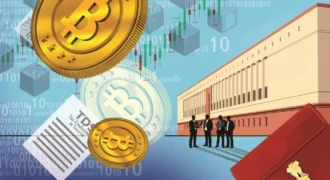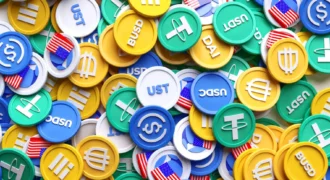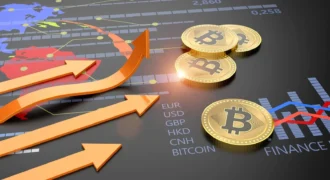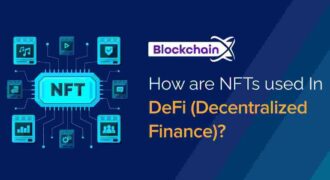In the rapidly evolving world of cryptocurrencies, partnerships are more than just PR moves — they’re strategic milestones that validate projects, expand adoption, and boost market confidence. For altcoins, landing a high-profile partnership can propel a token from obscurity to mainstream recognition almost overnight.
In 2025, as blockchain technology continues to integrate with industries like gaming, finance, and e-commerce, altcoins securing partnerships with established corporations, platforms, or decentralized networks are signaling long-term potential. Understanding which altcoins are leading in strategic collaborations provides insight into market trends, adoption trajectories, and investment opportunities.
Why Partnerships Matter for Altcoins
Partnerships are a critical growth lever for altcoins for several reasons:
- Validation of Technology and Vision
Collaborating with reputable companies or platforms signals that an altcoin’s technology is credible, scalable, and useful, increasing investor confidence. - Expansion of Ecosystem and Utility
Partnerships often lead to real-world use cases, such as payments integration, NFT collaborations, or DeFi protocol adoption, which directly enhance token utility. - Market Exposure and Awareness
A high-profile collaboration attracts media attention, social engagement, and new investors, often leading to price appreciation and higher trading volumes. - Strategic Alignment
Partnerships align altcoins with complementary technologies, markets, or user bases, accelerating adoption and network effects.
Notable Altcoin Partnerships in 2025
Here’s a look at some of the leading altcoins securing significant partnerships this year:
1. Solana (SOL)
Solana has continued to strengthen its position as a high-performance blockchain. In 2025, Solana partnered with major gaming platforms to integrate play-to-earn (P2E) ecosystems and NFT marketplaces. These partnerships not only showcase Solana’s scalability but also expand its reach among gamers and digital collectors, fueling both adoption and liquidity.
2. Polygon (MATIC)
Polygon has established multiple collaborations with DeFi platforms and enterprise blockchain solutions, enabling seamless Layer-2 transactions. These partnerships enhance Polygon’s role as a go-to scaling solution for Ethereum, driving network activity and strengthening its market credibility.
3. Chainlink (LINK)
Chainlink, the leading decentralized oracle network, continues to secure partnerships with traditional financial institutions and smart contract platforms. These integrations allow real-world data to flow securely onto blockchains, expanding the scope of decentralized applications and solidifying Chainlink’s indispensable role in the ecosystem.
4. Cardano (ADA)
Cardano has made headlines by partnering with governments and academic institutions to implement blockchain-based identity verification and supply chain solutions. These partnerships demonstrate Cardano’s commitment to real-world utility, attracting investors who prioritize long-term adoption over short-term speculation.
5. Avalanche (AVAX)
Avalanche has signed deals with fintech and DeFi platforms to support cross-chain interoperability and rapid transaction settlements. By facilitating faster and cheaper transfers, Avalanche positions itself as a practical solution for both institutional and retail investors, enhancing credibility and adoption.
How Partnerships Impact Altcoin Markets
The influence of partnerships on altcoin prices and investor sentiment is tangible:
- Price Surges and Trading Volume
Announcements of major collaborations often trigger immediate market reactions, with token prices spiking as traders anticipate increased adoption and future utility. - Enhanced Investor Confidence
Partnerships with reputable companies reduce perceived project risk. Investors are more likely to hold tokens when adoption is backed by credible entities. - Liquidity Improvements
Increased interest and trading activity following partnerships improve liquidity, reducing slippage and stabilizing markets for both retail and institutional investors. - Long-Term Adoption Signals
While short-term price movements attract headlines, the true value of partnerships lies in ecosystem growth and token utility, ensuring sustainable market presence.
Trends in Altcoin Partnerships
Analyzing 2025 altcoin partnerships reveals several emerging trends:
1. Integration with Gaming and NFTs
Gaming and digital collectibles continue to be a major growth sector. Altcoins that partner with gaming platforms, NFT marketplaces, and esports organizations gain rapid exposure to engaged user bases, driving adoption and transactional volume.
2. Enterprise Blockchain Collaborations
Corporate and fintech partnerships are on the rise. Altcoins enabling cross-border payments, supply chain transparency, or tokenized assets are finding footholds in traditional markets, enhancing legitimacy and long-term viability.
3. Layer-2 and Interoperability Projects
Altcoins focusing on scalability and interoperability are forming strategic alliances with major networks. These partnerships address one of the biggest bottlenecks in blockchain adoption: seamless, cross-chain functionality.
4. Sustainability and ESG Initiatives
Environmental concerns are influencing blockchain adoption. Altcoins partnering with sustainable projects, renewable energy initiatives, or carbon-credit platforms are gaining traction among eco-conscious investors.
What Investors Should Watch
For investors tracking altcoin partnerships, several factors are critical:
- Credibility of Partner
Not all partnerships carry equal weight. Collaborations with reputable companies, large platforms, or government entities signal higher potential for adoption and ecosystem growth. - Depth of Collaboration
Is it a marketing partnership, or does it involve actual integration of blockchain technology? Investors should focus on projects where partnerships lead to tangible utility. - Timing and Market Reaction
Early adoption of partnership news can offer trading opportunities, but long-term holders should evaluate the sustained impact on network activity and token utility. - Synergy with Ecosystem Goals
Partnerships that align with an altcoin’s core mission — whether scaling, DeFi adoption, or NFT integration — tend to deliver more meaningful and lasting market impact.
Case Studies: Successful Altcoin Partnerships
Solana and Star Atlas
The Solana blockchain partnered with Star Atlas, a blockchain-based gaming ecosystem, to integrate in-game assets and NFT marketplaces. This collaboration not only increased SOL adoption among gamers but also drove significant transactional activity on the Solana network.
Polygon and Reddit
Polygon’s integration with Reddit’s community points system enhanced its visibility and usability. Users could earn and trade Polygon-powered tokens on Reddit, demonstrating real-world adoption and cross-platform utility.
Chainlink and Google Cloud
Chainlink’s collaboration with Google Cloud enables secure, real-time blockchain data feeds for enterprise applications. This partnership highlights how altcoins are bridging the gap between traditional finance and decentralized networks, boosting investor confidence.
Conclusion
Partnerships are a powerful indicator of altcoin potential, influencing adoption, liquidity, investor sentiment, and long-term utility. In 2025, altcoins securing collaborations with gaming platforms, DeFi networks, enterprise institutions, and sustainable initiatives are leading the pack, signaling innovation and real-world relevance.
For investors, tracking altcoin partnerships is not just about following the hype — it’s about identifying tokens with tangible use cases, credible backing, and ecosystem growth. By combining partnership analysis with market metrics, liquidity trends, and technological evaluation, investors can make informed decisions and strategically position themselves in a high-potential, high-volatility market.
Ultimately, in the dynamic altcoin ecosystem, partnerships are more than announcements — they are catalysts for adoption, growth, and market resilience, shaping the future of digital assets in the global economy.

